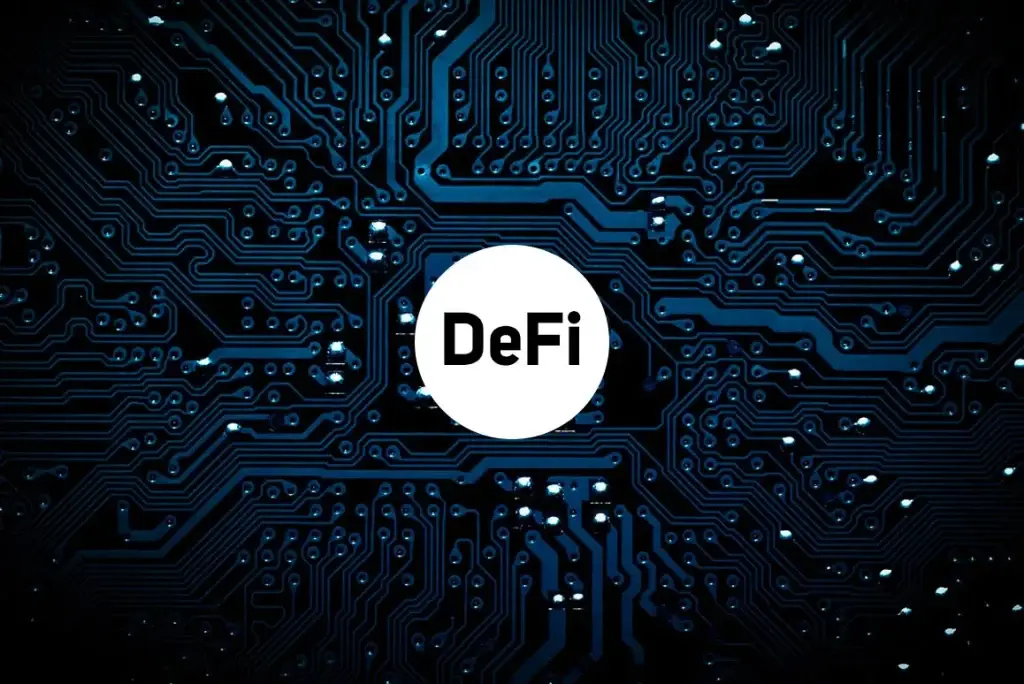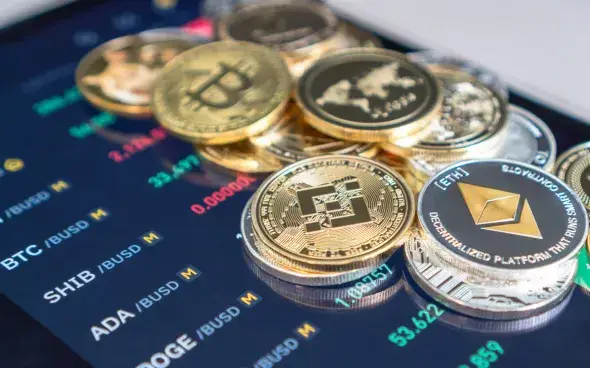Blockchain technology has created an alternative financial infrastructure in which there are no banks, intermediaries or barriers to entry. DeFi has transformed the logic of capital investment, freed up access to income protocols and eliminated trust as an essential requirement. Investors communicate directly with the code, the assets and the smart contracts. To understand how to invest in DeFi, you need to master the logic of the autonomous economy, which is based on transparency, mathematics and software architecture.
What is DeFi and how does it work?
DeFi (Decentralised Finance) is a system of financial services based on open protocols. Its main function is the automation of transactions via smart contracts. Due to the lack of centralisation, users manage their assets independently and communicate directly with the platforms.
Investors who learn to invest in DeFi work with decentralised exchanges (DEX), staking, farming, lending protocols, stablecoin platforms and DAOs. Asset management is done without registration or KYC, and transactions remain the sole responsibility of the owner.
First step: how to start investing in DeFi
 Before investing in DeFi, it is important to determine which blockchain the protocol you are interested in is based on. Ethereum, BNB Chain, Arbitrum, Optimism, Avalanche: each solution has its own speed, gas fees, liquidity and number of projects. On the Ethereum network, for example, the cost of a transaction can vary from £3 to £25, depending on the load. Layer-2 solutions reduce the commission to a few cents while maintaining the same level of security. The choice of network depends on the capital, the frequency of transactions and the investment objectives.
Before investing in DeFi, it is important to determine which blockchain the protocol you are interested in is based on. Ethereum, BNB Chain, Arbitrum, Optimism, Avalanche: each solution has its own speed, gas fees, liquidity and number of projects. On the Ethereum network, for example, the cost of a transaction can vary from £3 to £25, depending on the load. Layer-2 solutions reduce the commission to a few cents while maintaining the same level of security. The choice of network depends on the capital, the frequency of transactions and the investment objectives.
How to choose a protocol: statistics and security
To understand how to invest safely in DeFi, you need to use objective assessment criteria. The priorities are the volume of locked funds (TVL), the age of the project, the reputation of the team, the frequency of audits, and resistance to attacks. Protocols with a TVL of $500 million, which have passed at least two independent audits and have been operating for more than 18 months without critical incidents, fall within the trust zone. Examples include liquidity pools, lending platforms, and yield aggregators. By analysing this data, investors minimise the risk of capital loss due to code errors or hacker attacks.
Key investment strategies in DeFi
DeFi offers a wide range of strategies with different risk profiles. It is important to consider the duration of the investment, the volatility of the tokens and the possibilities for reinvestment.
Key areas:
- Staking: locking tokens in smart contracts to earn a percentage. Examples: ETH 2.0, ATOM, AVAX. The return varies between 5% and 12% per year.
- Yield farming: providing liquidity to common funds, resulting in the acquisition of LP tokens and rewards. Popular platforms: Curve, Balancer, PancakeSwap.
- Lending and borrowing: interaction via the Compound and Aave protocols. Income is generated from the interest paid by borrowers.
- Aggregators: automated platforms that optimise returns (Yearn, Beefy). They simplify complex strategies.
- Launchpads and IDO: participation in the early placement of tokens via DAO platforms and launchpads.
Interaction with DEX: trading without intermediaries
By learning to invest in DeFi, investors gain access to decentralised exchanges such as Uniswap, SushiSwap and TraderJoe. DEXs operate without an order book but use automated market makers (AMMs). Liquidity comes from users and the price is determined by an algorithm.
A special feature is the absence of custody. The trader does not transfer the tokens to the exchange but only grants temporary access to the contract. This eliminates the risk of account blocking or asset withdrawal. However, low liquidity or slippage can affect the outcome of the transaction.
Stablecoins and capital protection
Stable tokens pegged to fiat currencies play a crucial role in the DeFi infrastructure. Investors use stablecoins such as USDC, DAI, and USDT to access protocols, place in pools, or participate in staking without volatility. To choose the right assets and understand how to invest in DeFi, you need to consider the stablecoin’s reserve model: fiat (USDC), crypto-backed (DAI) or algorithmic. High transparency and regular reporting are criteria for reliability.
How to invest correctly in DeFi: risk assessment
DeFi involves technological, market and operational risks. Frequent attacks via flash loans, code errors, outdated libraries and excessive APRs require systematic assessment.
To understand how to invest in DeFi without losses, you should:
- use multiple signatures and hardware wallets;
- limit investments in unregulated protocols;
- apply diversification;
- monitor token behaviour through blockchain analysis.
It is also important to consider the influence of the cryptocurrency context, especially when the value of the underlying assets declines. For example, the sharp decline in the ETH price in 2022 led to the collapse of collateral in dozens of DeFi protocols.
How to choose a wallet for working with DeFi?
When choosing a tool for storing and managing assets, you need to consider network compatibility, security, and compatibility with dApps. Before investing in DeFi, the investor links the wallet to the smart contract, where the assets are registered in the protocol. For active transactions, the MetaMask, Rabby or Trust Wallet extensions are used. Hardware devices such as Ledger offer protection for large amounts of capital. The wallet interface must support multi-network operations, notifications, staking support and contract-level limit approval.
Errors when signing transactions, unrepealed authorisations, and connection to phishing dApps create a risk of hacking, even when using a high-quality DeFi protocol. Therefore, before investing in DeFi, it is necessary to test each connection in an isolated browser and manually check the addresses.
Legal aspects and tax burden
Decentralisation does not relieve you of your responsibility. DeFi profits are subject to tax regulations. In various jurisdictions, income from farming and staking is classified as investment income. Failure to comply with tax reporting requirements will result in penalties. It is necessary to study local legislation, especially in countries where reporting on digital assets is mandatory. The use of anonymous wallets, offshore DAOs and uncertified tokens can lead to blockages or lawsuits when transferring money to fiat.
To illustrate, here are some examples that show how you can invest in DeFi with a reasonable level of risk and a reasonable strategy:
- In 2021, a user deposited $10,000 into the USDC/DAI common fund on the Curve platform. The total return over 12 months was 13.8% without any changes in the exchange rate.
- The investor distributed £5,000 across the Aave and Compound platforms and earned 7% per annum on the loans.
- By investing £2,000 in the Uniswap token (UNI) and staking it in the ecosystem before it was listed on centralised exchanges, the return was 85% in 9 months.
- The DAO Curve participant received governance tokens and sold them after voting on an important parameter, earning £1,400 in the internal economy.
These examples show that understanding the architecture, protocol logic and tokenomics makes it possible to scale capital safely.
How to track the effectiveness of the DeFi portfolio
To understand how to invest in DeFi, you need to regularly audit the portfolio. Services such as DeBank, Zapper, and Zerion add information about investments, accrued interest, and contract status. The platforms display the APY, asset value, and changes in positions in real time.
To manage risks, it is recommended to track the following:
- LTV (loan-to-value) when issuing loans;
- temporary losses in liquidity funds;
- portfolio activity and authorisation history;
- fluctuations in the stablecoins involved in the strategies.
Any deviation from the expected parameters requires immediate correction. The connection with the control panel and contract analysts strengthens control over capital.
DeFi outlook: where is the market headed?
 The sector is growing. The number of unique wallets interacting with DeFi has exceeded 7 million. By 2025, solutions based on zk-Rollup, RWA platforms (tokenisation of real estate, securities) and hybrid protocols with CeFi features will appear. The development of DAO and voting based on participation in management reinforces the importance of long-term token ownership. New standards for smart contracts minimise risks. Therefore, understanding how to invest in DeFi remains an important skill for investors.
The sector is growing. The number of unique wallets interacting with DeFi has exceeded 7 million. By 2025, solutions based on zk-Rollup, RWA platforms (tokenisation of real estate, securities) and hybrid protocols with CeFi features will appear. The development of DAO and voting based on participation in management reinforces the importance of long-term token ownership. New standards for smart contracts minimise risks. Therefore, understanding how to invest in DeFi remains an important skill for investors.
 en
en  ru
ru  de
de  ar
ar  es
es  nl
nl  hi
hi  fr
fr  it
it  pt
pt  el
el 






